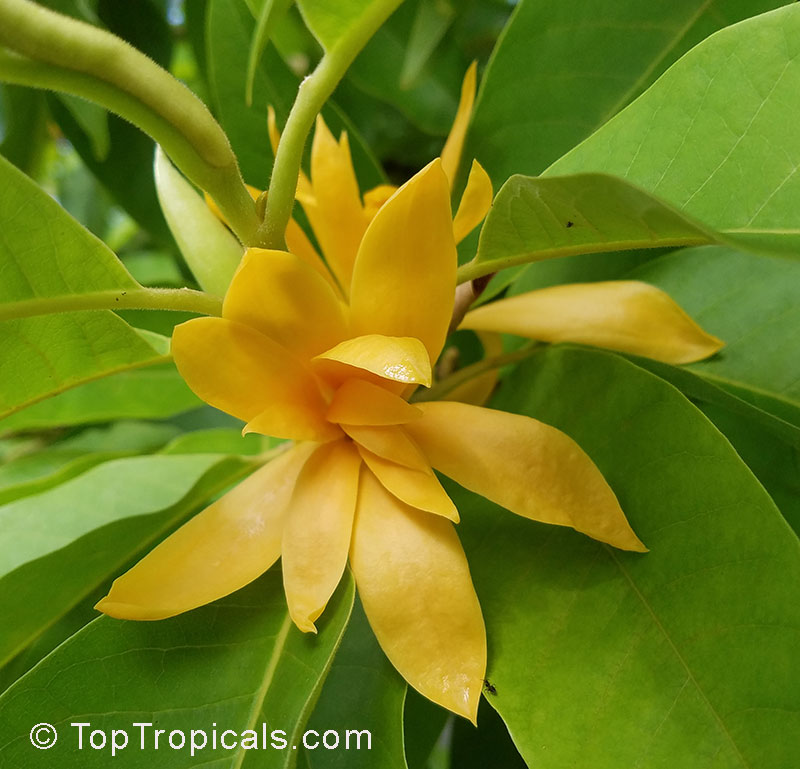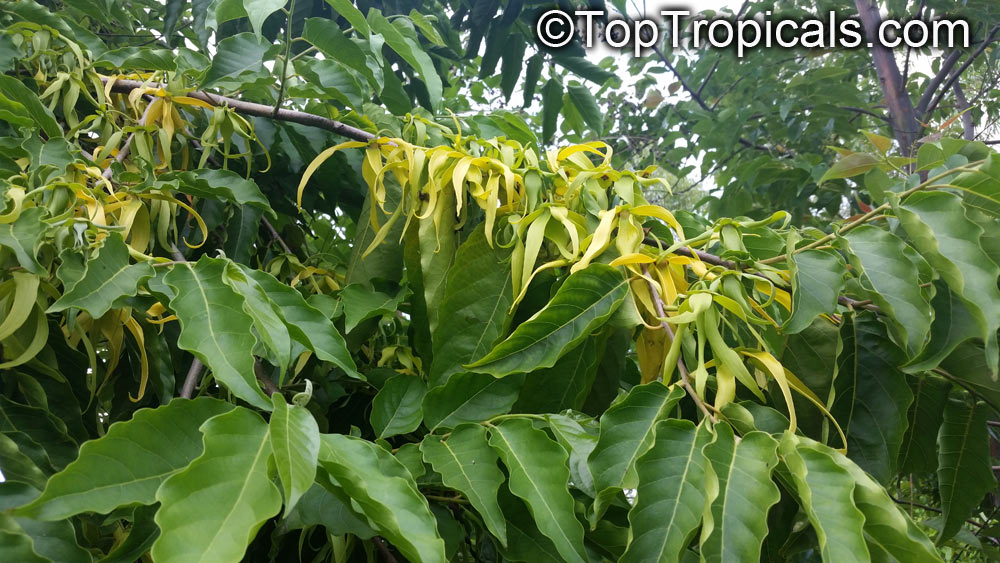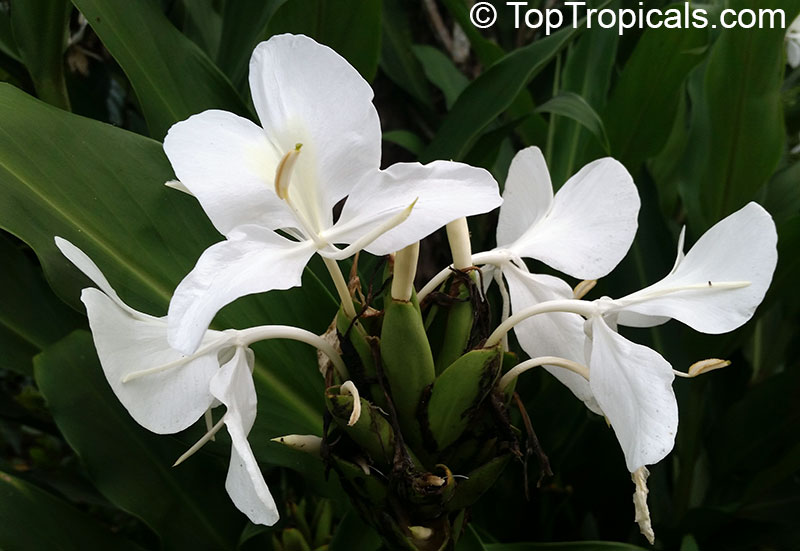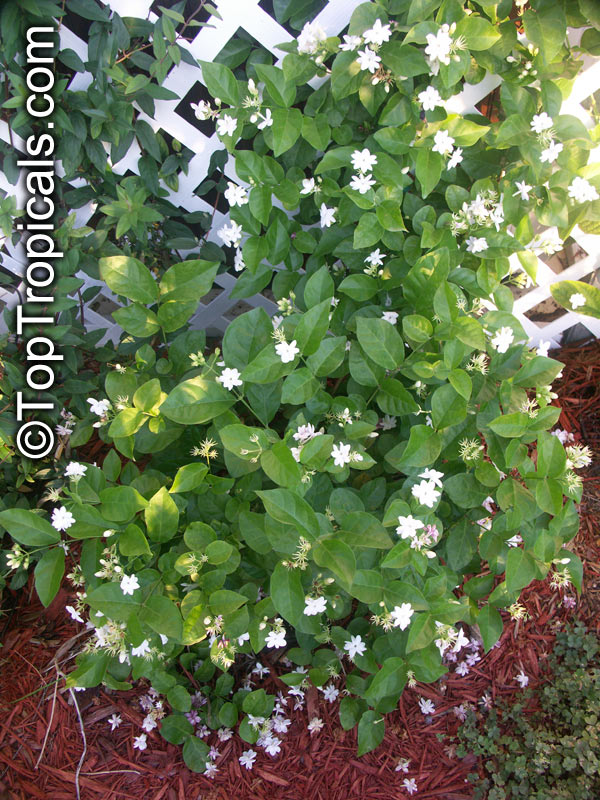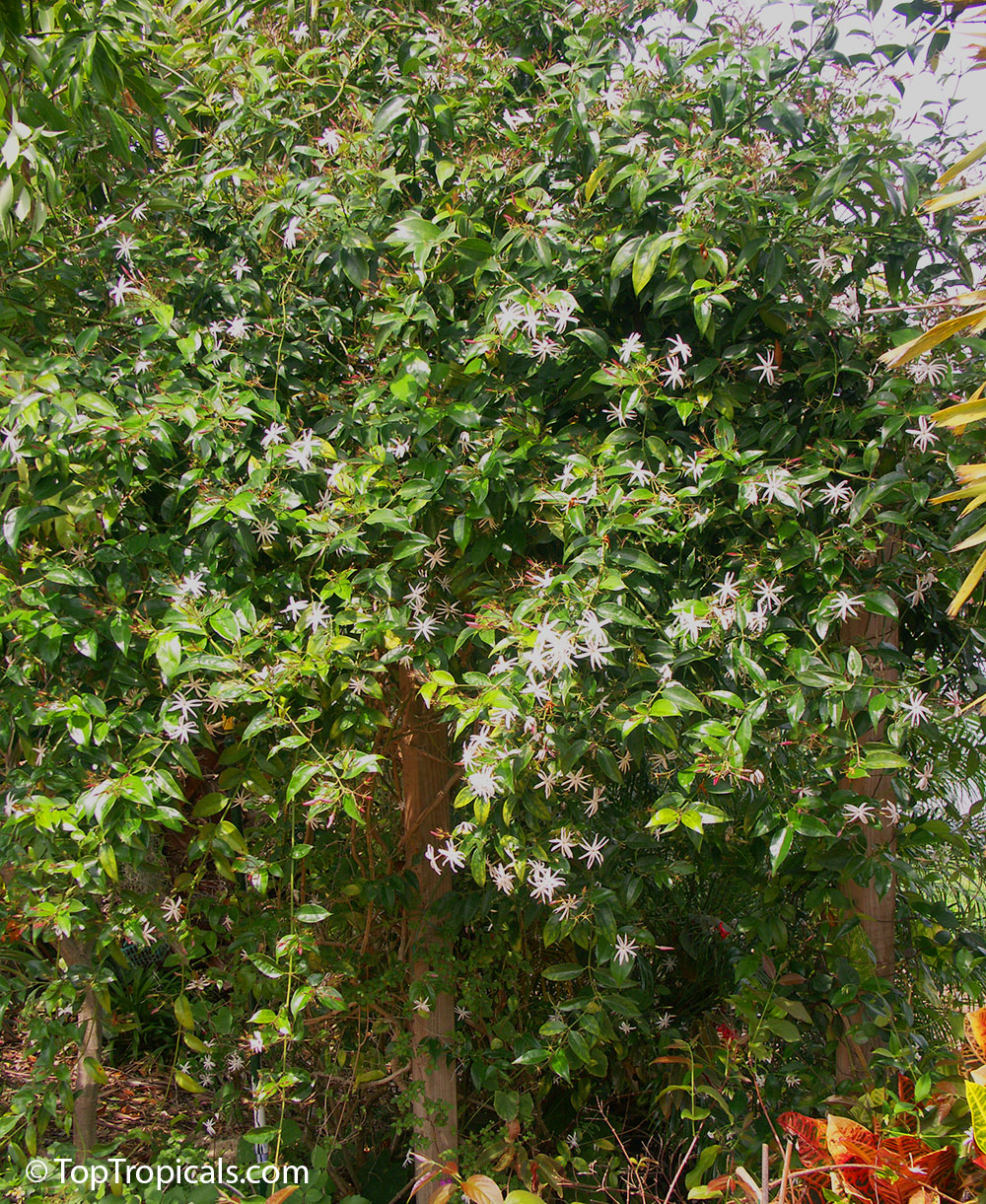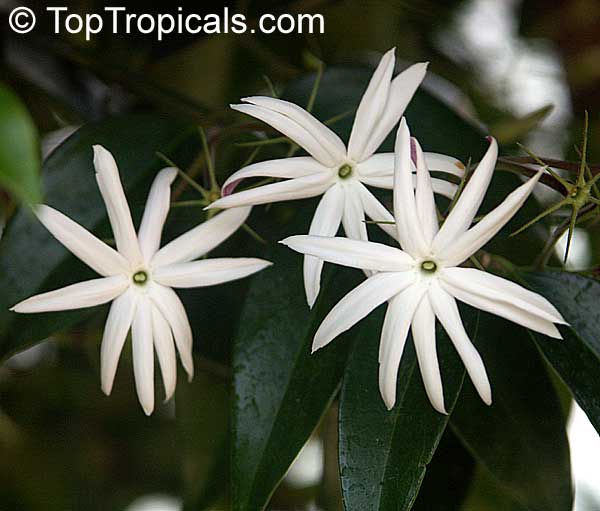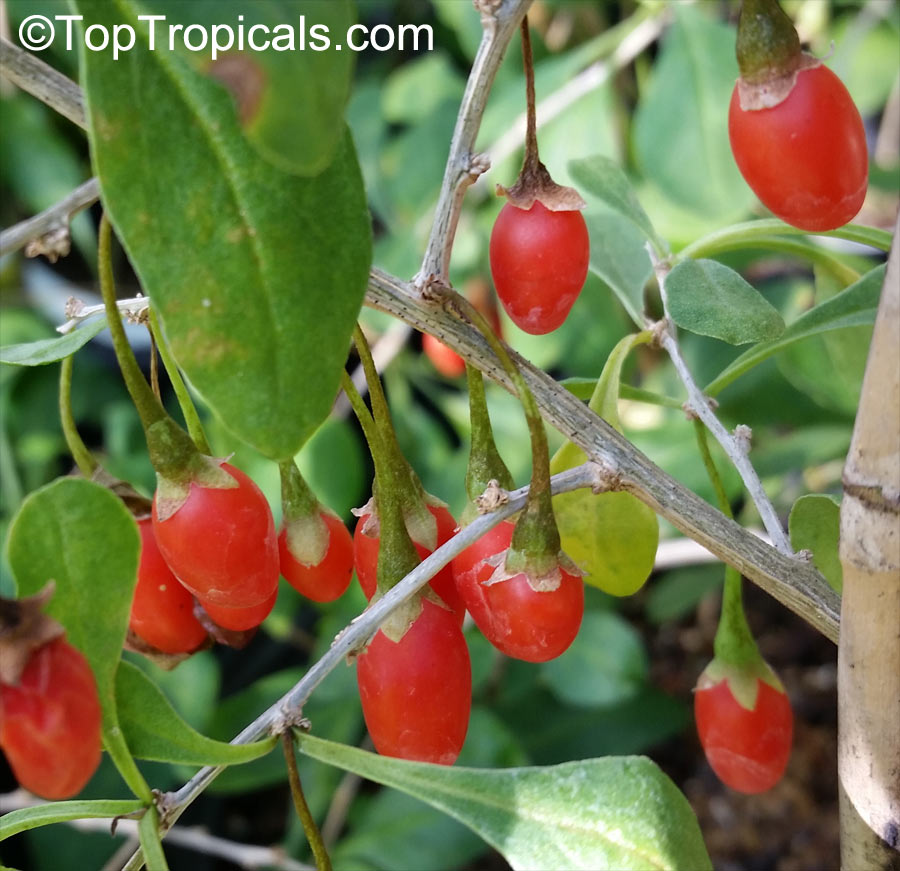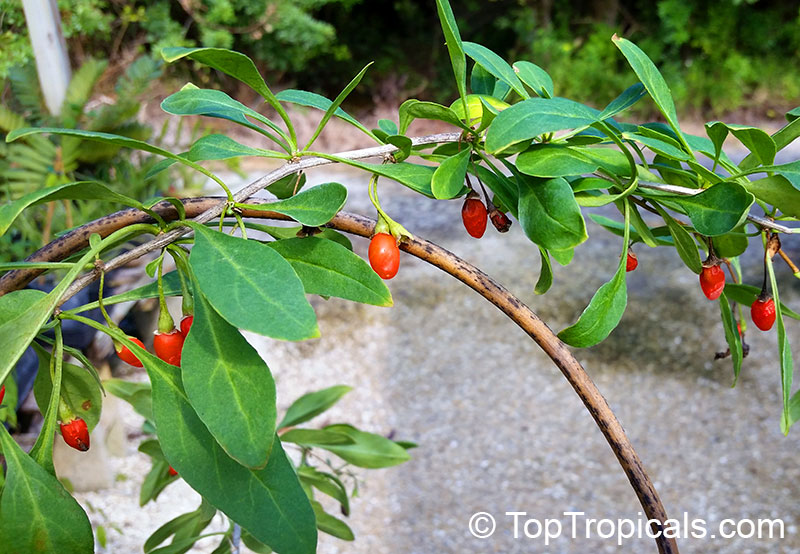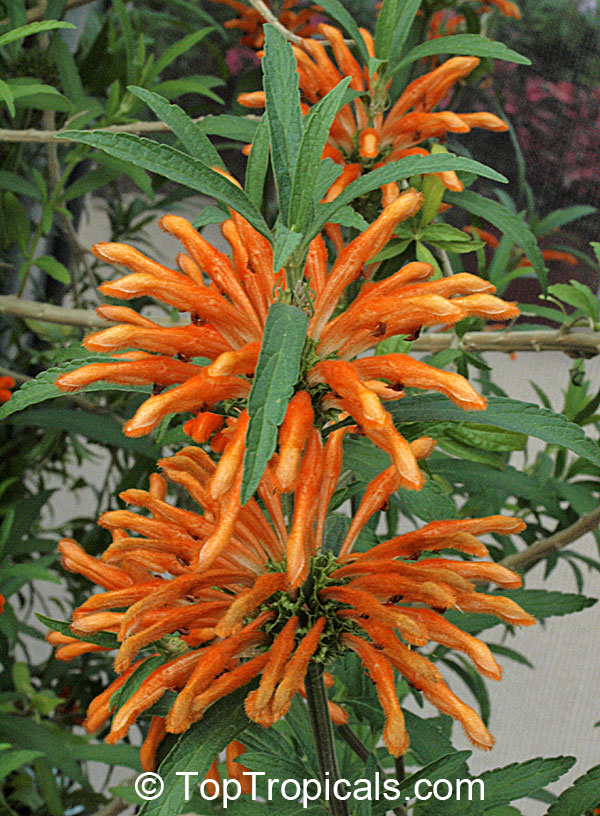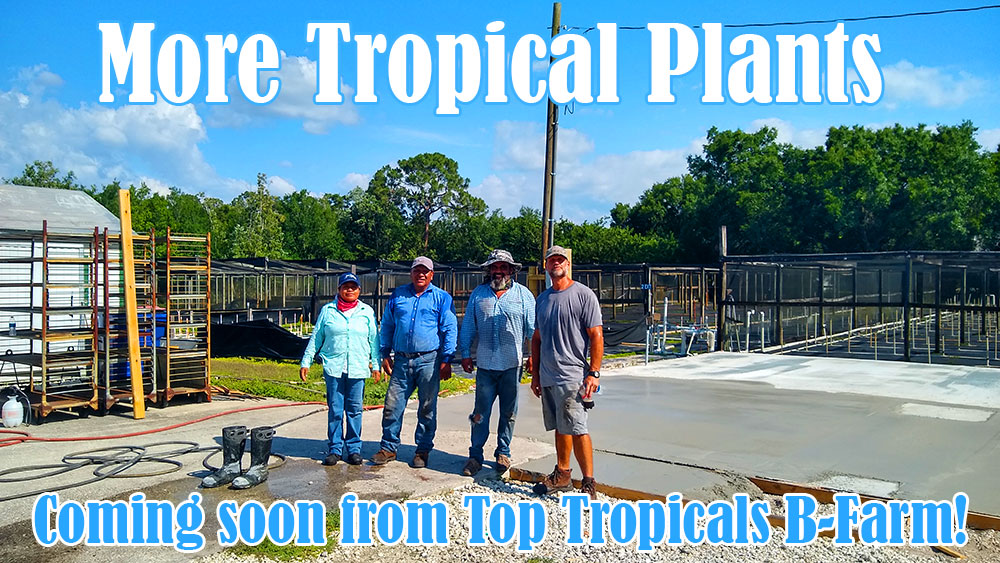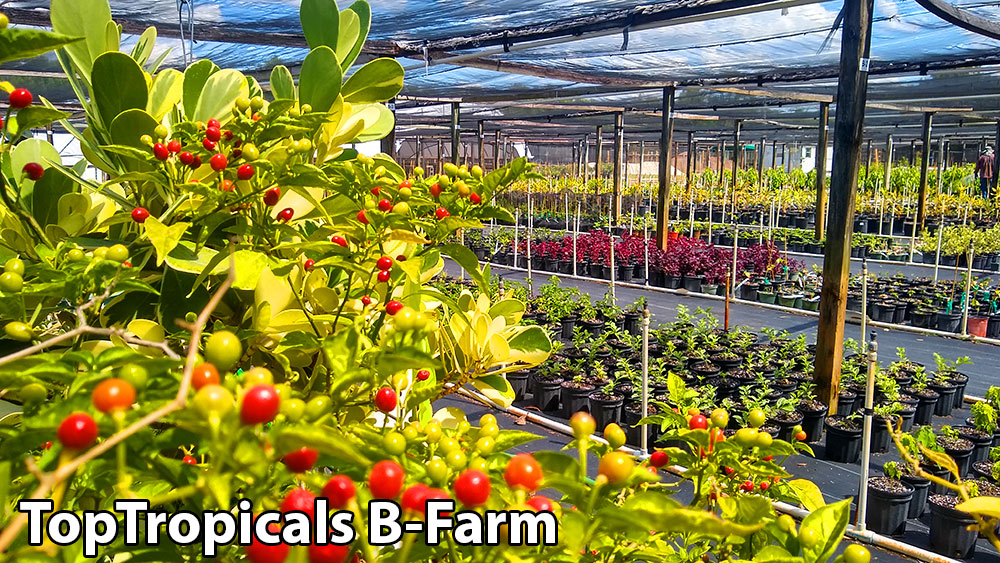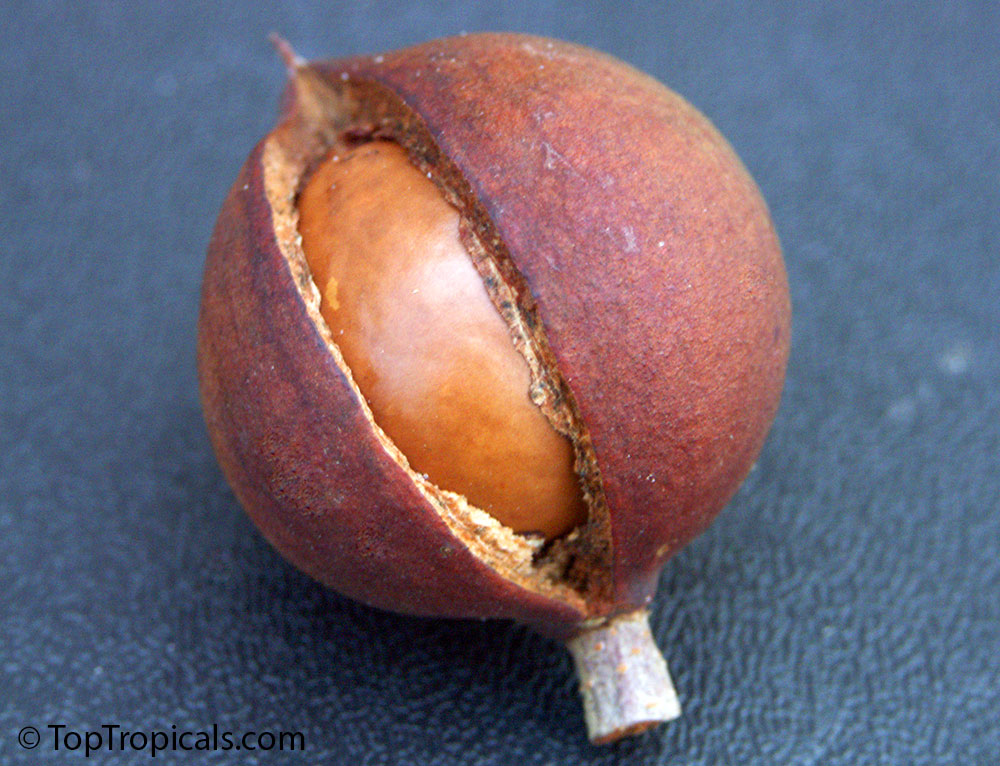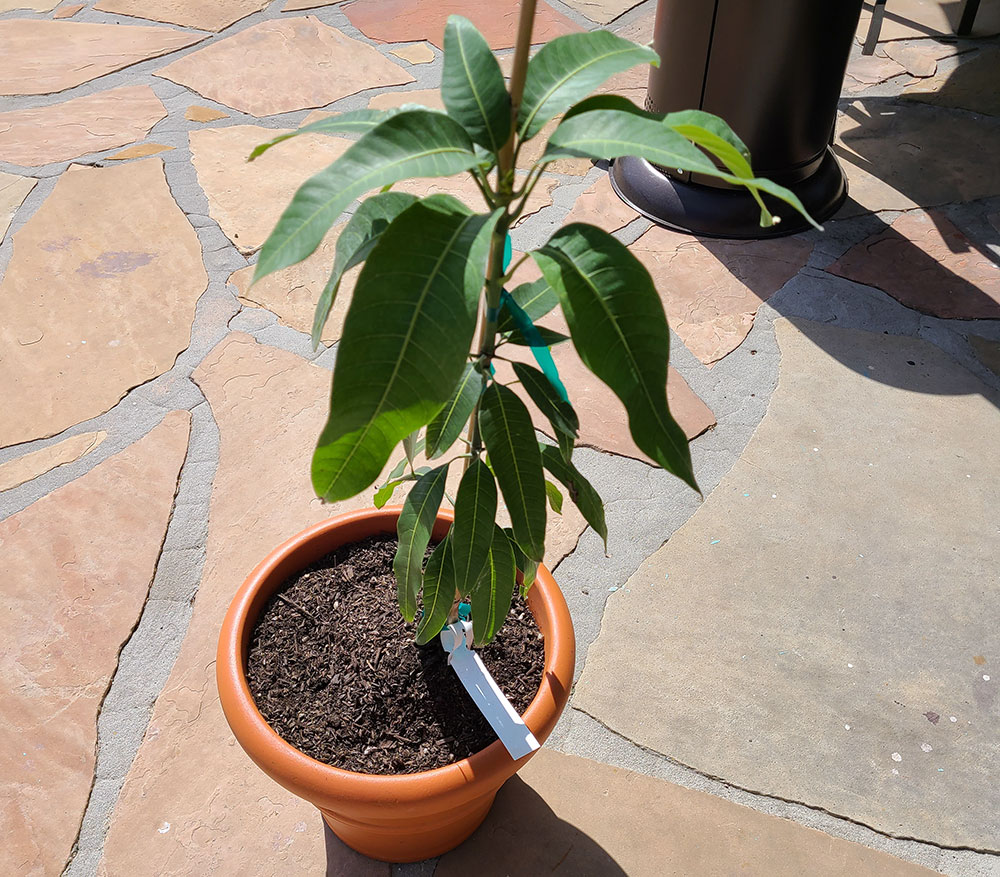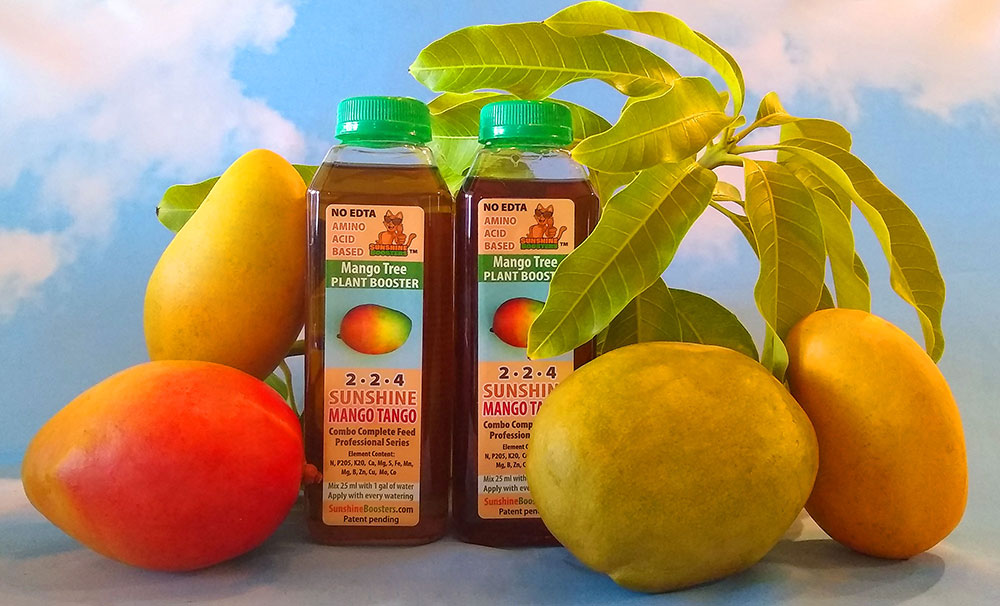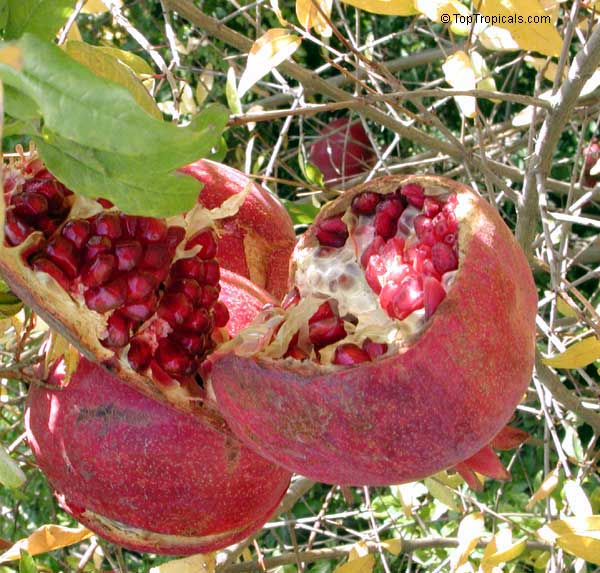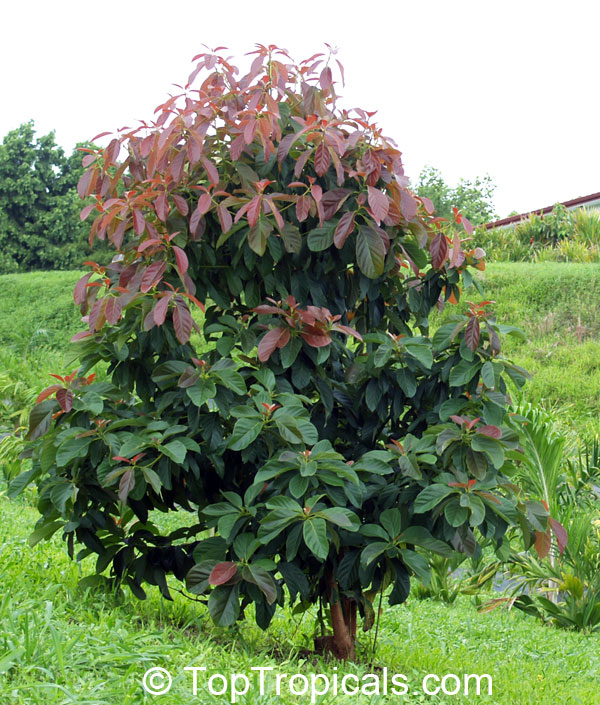Garden Blog - Top Tropicals
Date:
Growing Champaka in Virginia
Q: I purchased a Magnolia champaca 1 gallon a few years ago. It is still growing as I bring it into my greenhouse in the winter. I live in VA. This spring I planted it in the ground hoping it might bloom which it did not. Will it survive our fairly mild winters with several freezing days with some special attention? What would you do?
A: Magnolia champaca is a tropical tree and won't survive winter in VA. It can not take hard freeze. Your only option is, to keep it in a pot and bring inside. If the temperature inside your greenhouse is too low, this may affect the plant's ability to flower. For example, if it stays 35-40F for a whole month - although it is not a hard freeze and the plant may survive, but the duration of the cold period is more critical than the low temperature itself. Champaka can survive a few hours even at upper 20's, but not many days with cool temperatures. The temperature in winter should be maintained at least above 55F during day time (the higher the better) and at least above 45F at night.
If the tree has grown too big, you may trim it. If the root ball is too
large, roots can be trimmed too (similar way like they do with bonsai) before
repotting. However, trimming must be done either during warm season and active
growth, or in Spring, when the tree starts waking up and promotes new
growth.
To encourage flowering, start fertilizing your Champaka with a liquid bloom
booster - SUNSHINE Pikake - Fragrant Flower Booster. It can be used year round
including winter months, and it is safe to apply with every watering. This way
you will provide to the tree enough energy for the next flowering season, so
flowers can be expected in late Spring - Summer.
Read more about greenhouse growing: Greenhouse in Virginia.
Date:
Champaka - a true Joy of your life
by Alex Butova, the Witch of Herbs and Cats
...Champaka, or Joy Perfume Tree, is regarded as one of the most sacred
trees of India and tropical Asia. Its flowers exude a divine fragrance that
is exceedingly pleasing to the Gods... and women!..
...The tree was traditionally used to make fragrant hair and massage oils.
Jean Patou's famous perfume, 'Joy', the second bestselling perfume in the world after Chanel No. 5, (but definitely the most expensive number one!) is derived from the essential oils of champaka flowers. The plant common name "Joy Perfume Tree" comes from this perfume. Many niche perfumers are now once again using Champaka Absolute as single note fragrances...
Planting a Golden Champaka really makes your home a sweet home. Also you
can take the flower into your car, office, restroom, and anywhere you want to
create fragrant atmosphere. It emits a unique warm fragrance which promotes a
peaceful state of mind, reduces stress and helps you to relax and breathe
easily. Looks like it is specially designed for moments of tranquil
contemplation. It's the nature of Champaka - to remind us of the Divine in all
things...
CONTINUE READING >>
Date:
Tahitian Gardenia
Q: I am interested in your Tahitian Gardenia and I would love to try and grow this plant in a large container/fabric pot. The soil here where I live is terrible as it's hard rock, clay, and sand! So I'm not sure if amending the soil would help to plant in the ground? Can you tell me if this will do okay in a container or best in ground? I live here in Las Vegas, NV (zone 9a). Any information would be great to help me make a this decision, I love the selection of cool tropical plants you offer! Also my daughter does Tahitian/Polynesian dance and this would be a cool "topping on the cake" if she could have a live Tiare flower in her performances.
A: Tahitian Gardenia will be doing best if grown in container in your
area. In its natural habitat, it grows full sun but also it enjoys mild weather
conditions and high air humidity. All gardenias prefer acidic soils. In your
area, if planted in the ground, it may be exposed to some harsh conditions:
too high temperatures, too hot sun, dry air, and as you mentioned - heavy clay
and sandy soil. You can enjoy this plant grown in container, which can be
moved as needed away from too much sun during summer months. Use well-drained potting mix. Use plastic pot, do not use fabric or clay
pots - soil will dry out too quickly.
Also remember to fertilize this plant on regular basis with a liquid
fertilizer SUNSHINE Pikake - Fragrant Flower Booster.
Grow gardenia in full sun or semi-shade during the hottest months. You may
spray it with pure water if the air too dry and hot. Enjoy your Tropical
Beauty and good luck!
Date:
Fragrant plants - Sweet memories
...More than any other sense, the sense of smell has the power to recall memories of the past. Perhaps this is because the olfactory impressions are received by the brain's limbic system, one of the most ancient components that also associated with emotions. The result is that even a whiff of a certain flower or leaf can instantly transport us in time to when we first encountered the fragrance. Little wonder that fragrant plants have always ranked high among Southern favorites...
CONTINUE READING >>
Date:
Jasmine for a fence
In the photo: Jasmine Maid of Orleans
Q:We are looking for a jasmine variety without thorns that we can grow on a wire fence...
A: All true jasmines (Jasminum spp.) are thornless. So you are safe to get anyone you like. The most vigorous, fast growing jasmines that grow into a vine, are:
Jasminum dichotomum
Jasminum pubescens
Jasminum nitidum
Jasminum officinale
Jasminum sambac Maid of Orleans - the
most fragrant!
In the photos: Jasminum nitidum (Star Jasmine)
Date:
The Magic Goji Berry
by Alex Butova, the Witch of Herbs and Cats
...According to folklore, people living in the Himalayas who eat Goji berries are reputed to live to between 120 and 150 years old... The famous Li Quing Yuen - a herbalist selling litchi, goji berry, wild ginseng, and gotu kola along with other Chinese herbs, and lived off a diet of these fruits, herbs and rice wine - ate Goji berries on a daily basis. Is said he to have lived to over 250 years... Is this possible? Find out!
CONTINUE READING >>
Date:
Healthy Plants: Q&A from Mr Booster
Healthy Heliconia Leaves?
Q: I purchased a heliconia from you a couple months ago. The new growth seems to be doing fairly well, however some of the larger leaves are discoloring around the edges then drying up. It's potted in a large pot with potting soil with 3 holes in the bottom to help with drainage in partial sun under a Royal Palm facing northwest. I'm here in Ft Myers. I was previously watering it every other day with your rapid growth fertilizer 1 tbsp per gallon but I have cut that back to once or twice a week. Please let me know your thoughts.
A: Heliconias and Gingers tend to develop dry leaves if grown in pots,
especially ceramic or clay pots, because soil in such pots dries out too fast.
These dry leaves are not caused by fertilizer, and you can see lots of new
healthy green growth. The plant overall seem to be healthy. Continue fertilizing
it with liquid Sunshine Robusta that is great for all wide-leaf tropical species,
promotes green, lush foliage, and do not use any additional dry fertilizers!
Another suggestion, try to move the plant in more shady spot. Right now it
sits in pretty bright light, this may be OK for established plants in the
ground, but potted heliconias are very sensitive to hot sun. They get leaf burn
easily.
Date:
Mark your calendar:
June 19, 2021
Summer Solstice Celebration with PeopleCats
Special Event you can't miss!
First day of Summer and the longest day of the year! Live Jazz in the
Garden, lots of cool vendors
and "A Roof for Rufus" cat adoptions...
Come join the Top Tropicals crew for the longest planting day of the year.
Onika, Bella, Mark and David will be here soaking in the sun and helping you
to pick the right plants...
Saturday, June 19th
9:00 am - 4:00 pm
Top Tropicals is proud to partner with A Roof for Rufus cat adoptions. Each cat attending this event has been
hand picked and approved by King.
Don't miss this event! Talk to the kitties and find your companion in life.
PeopleCats never betray and they will love you forever!
SEE KITTIES PROFIILES >>
In the photo: PeopleCats from Roof for Rufus Rescue waiting for their forever homes.
Date:
Leonotis leonurus:
Lion cub's tails looking out of a tall grass...
by Alex Butova, the Witch of Herbs and Cats
...When you drive along the savannah and veld of South Africa, you can
see a groups of lion's cubs running among the tall savannah grass. Their ears
look out of the grass as bright cheerful spots. The tips of their tails swing
by the wind with the grass where the cubs hide. Why so many Lion's cubs?
What a surprise! However, these are not the cubs of the King of Animals, these
are the tips of pretty flowers endemic to this region...
...A curious thing, the plant continues growing through the flower! This
creates a multi-level appearance...
...Leonotis has a long history of medicinal use by traditional African
tribes... This plant has a history of being used for its psychoactive properties
which have been compared to a mild version of the Cannabis plant... Modern
herbal medicine mainly uses this plant for a calming tea infusion...
CONTINUE READING >>
In the photo: Mr B stays calm with his Lion's Ears...
Date:
NEW: Top Tropicals B-Farm
Our new grow farm in Sebring, FL
Since the demand in rare tropical plants increased dramatically, we had
to extend our nursery so we can satisfy all our customers' plant needs. So we
started a new grow farm!
Our new, second location: Top Tropicals B-Farm in Sebring, FL (Highlands
County), is still under construction, but we already grow a huge selection of
rare flowering and fruiting plants for you. And of course Mr B is the supervisor of his own B-Farm!
Those who live in Central Florida, are welcomed to pick up their orders
from B-Farm, save on shipping cost, and eliminate shipping stress for your
plants. Please contact our Customer Service to make an appointment for picking up your order in
Sebring. At B-Farm, our office is still under construction so we do not have
regular hours open for public yet. For now, please shop online and you may pick
up your plants either from our Ft Myers Garden Center, or from B-Farm in Sebring.
Please note: Due to 2 locations, some plants may or may not be
available at one of the locations, please verify over the phone first, before
planning your pick up trip!
Date:
Cold hardy tropical fruit trees for Zone 9
Q: Can you suggest tropical fruit that can be grown (cold hardy) in Zone 9?
A: There are quite a few tropical/subtropical trees that will
grow well in zone 9. Our favorites are:
Figs - very cold hardy and drought tolerant.
Loquats - grafted trees that start fruiting right away, reliable
producers.
Tropical Mulberry - very fast growing trees that can take freeze, heavy
producers.
Macadamia - these trees are of a compact nature, very easy to grow and
start producing nuts right away.
Many different varieties of Eugenias - tropical cherries - all-time favorites. Another tropical cherry - Malpighia, or Barbados cherry - starts fruiting in small size under one food tall! Great for containers.
Tropical (Low Chill) Peaches, Nectarines, and Plums. See full list of low-chill, relatively cold hardy fruit
trees.
And of course -
Bananas!
Don't forget to fertilize your fruit trees to improve their cold hardiness!
Date:
Macadamia Goodness
Macadamia nuts are rich in vitamins, minerals, fiber, antioxidants, and
healthy fats. Their potential benefits include weight loss, improved gut
health, and protection against diabetes, metabolic syndrome, and heart
disease.
Native to Australia, Macadamia trees are now grown in various places around the world, such
as Brazil, Costa Rica, Hawaii, and New Zealand.
Like most other nuts, Macadamia nuts are rich in nutrients and beneficial
plant compounds. They are also linked to several benefits, including improved
digestion, heart health, weight management, and blood sugar control.
10 health benefits of macadamia nuts
1. Rich in nutrients
2. Loaded with antioxidants
3. Boost heart health
4. Reduce risk of metabolic syndrome
5. May aid weight loss
6. Improve gut health
7. Providing anticancer properties
8. Boosting brain health
9. Bumping up your longevity
10. Easy to add to your diet
Learn more...
Delicious Macadamia nuts are loved by everyone, but they are so expensive from a grocery store... If you are excited about this nut, start saving: get your own tree and harvest your own goodness!
Macadamia are very handsome trees. They are easy to grow, require very little care and are relatively cold hardy. The are slow growing, compact bushy trees that start fruiting within 2-3 years from seed. Macadamias trees are reliable producers. The most important in Macadamia cultivation - do not over-fertilize this plant, it is very sensitive to regular fertilizer. Use only liquid plant food, and provide Micro-elements on regular basis.
Read more about this plant >>
Date:
Healthy Plants: Q&A from Mr Booster
Mango leaves and fertilizing
Q: I received a mango tree we ordered last week (I am in California) and am trying to make sure we take care of it properly. I noticed the corners of some leaves have began drying out. I wanted to see if there was anything else we should be doing or if it is something normal. Overall the tree looks good and the leaves have perked up, but I noticed the dry tips on a handful of leaves. Any help is appreciated! I have not fertilized in the pot yet or applied the mango sunshine booster.
A:Your mango tree looks pretty healthy, and these dry leaf tips may be caused by overall shipping stress. You have dry air in California, and temperatures may be getting up, this may cause additional drying effect. You may start fertilizing with a liquid fertilizer, it will help the plant to get stronger and grow faster - then heat and dry air won't be a problem as soon as the plant becomes better established and hopefully go into a bigger pot soon, or in the ground. Make sure to provide regular water if you have hot dry summers.
Date:
Trimming Pomegranate Tree
Q: I purchased a Pomegranate var. Vietnam, 3 gal from you in Feb. Your lit says trim for the first 3 years to encourage new growth. How old is my tree, please? Would you recommend I trim before leaving for the summer on April 30?
A: The Pomegranate trees we have for sale are grown from cuttings and are about 2 years old. Once you plant the tree in the ground, it will start producing new shoots. You don't need to trim it now. The best time will be end of summer.
Date:
Healthy Plants: Q&A from Mr Booster
Why my Avocado is not flowering?
Q: I have 5 avocados. Three of your cold hardy varieties and two others that have all flowered and set fruit in the past. The last two years including this year, not a single one of them has put out any flowers. I am getting lots of new growth like one would expect on a tree too young to flower. The last two years have been very mild with out any damaging frost where in previous years they lost all their leaves due to frost yet started putting out flowers once winter was over. I am confused because they have all flowered and set fruit previous years. Any ideas would be appreciated.
A: From information you provided, and considering the trees get
lots of full sun and cold was not an issue, the only explanation is - lack of
nutrients. Here is an example.
Very common situation: you get a small 2-3 ft Avocado or Mango tree in 3
gal pot (or even smaller) from a nursery, full of flowers, and sometimes even a
small fruit. You bring it home, plant it in the ground or a bigger pot, it
looks happy and grows like crazy. Then next year - oops, no fruit, sometimes
not even flowers. What happened?
When the tree lived in a nursery, it was provided with all necessary
nutrients through the injector systems (continuous feed); or some nurseries may use
top dress smart release on regular schedule. Regardless of fertilizer type,
professional grower's set up delivers plant food non-stop, on regular basis, with balanced formulas. Plants are not only growing fast but also ready to produce, since nutrients are always available for a full growth cycle.
When you plant a tree in the ground (or larger pot), conditions change.
They may be beneficial for the plant: lots of room for roots to establish, hence
lots of vegetative growth. Even if you planted it using good quality fertile
soil, this soil may contain mostly nutrients responsible for vegetative
growth (branches and leaves). Chances are, your soil may be rich in Nitrogen
(good for green growth), but poor in other elements responsible for flowering and
fruiting (Phosphorous, Potassium, and many important micro-elements such as
Molybdenum, Boron, Iron, etc.). Besides, existing soil gets exhausted
quickly, and within a year a two, if you don't add fertilizer, flowering and fruiting may be reduced or even stopped.
This is why fertilizing program is very important for fruit trees that are expected to bring a crop soon.
We recommend:
- SUNSHINE C-Cibus - Crop Nutrition Booster - balanced food for fruit
trees
- SUNSHINE-Honey - sugar booster - promotes more efficient blossoming and
pollination, makes flowers bigger and reduces bud drop
- SUNSHINE SuperFood - for improving fruit trees production
Also keep in mind that some fruit trees have a habit of "skipping" a year and may either produce less or not produce at all every other year. In any case, balanced nutrition program can help to fix this "bad habit".





